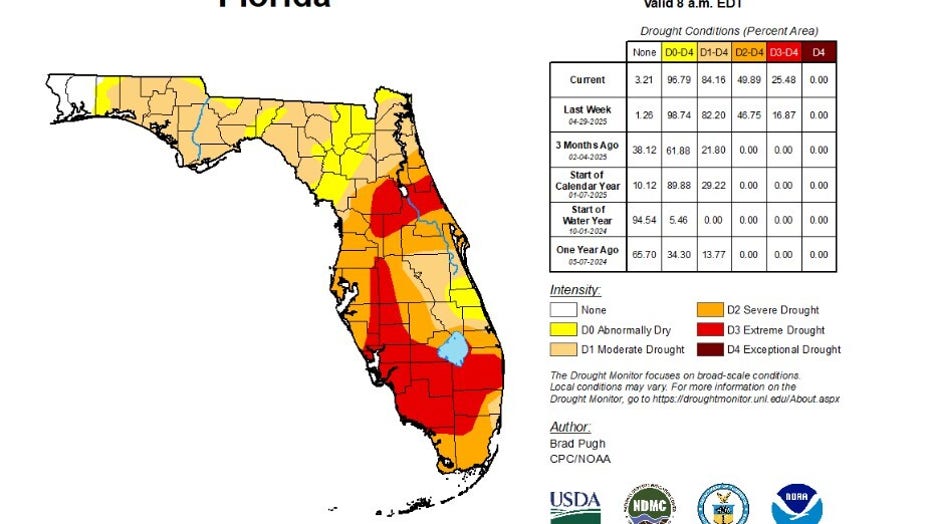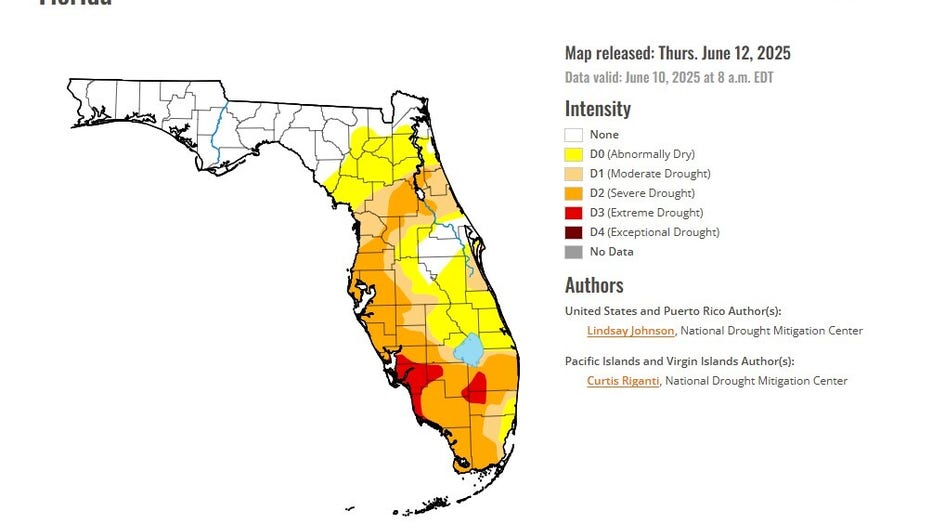Central Florida's drought improves, but lingering risks remain

NHC to use AI to track hurricanes
NOAA Deputy Director Jamie Rhode weighs in on the National Hurricane Center (NHC) using artificial intelligence to track hurricanes.
ORLANDO, Fla. - In early May, much of Central Florida was gripped by a severe to extreme drought. Although the drought conditions are slowly improving, lingering risks remain in the area.
How bad was the drought?
The backstory:
In early May, much of Central Florida — including key parts of the Orlando such as Orange, Seminole, Lake, Sumter and Osceola counties — was gripped by a severe to extreme drought. On the U.S. Drought Monitor scale, this meant D2 (Severe) and D3 (Extreme) conditions, a level not seen in the area for nearly a decade. This was serious and meant our wildfire threat was in the short-term, extreme as well.

The last time Central Florida experienced this level of drought intensity was during the 2017 springtime — one of the most impactful dry spells in recent memory. Back then, the region saw a spike in wildfires, brush burns and air quality alerts due to smoke. Sinkholes also became more prevalent, particularly in areas where groundwater had rapidly dropped from over-pumping and lack of recharge. Some communities faced water use restrictions, and natural areas suffered from dry, cracked soil and stressed ecosystems.
Drought levels continue to show improvement
What we know:
Fast-forward to June 2025, and there are clear signs of improvement.
The most recent drought map shows that the "extreme drought" classification (D3) has been completely erased from the Orlando area. It’s been downgraded to less severe categories, with many parts now falling under D1 (Moderate Drought) or even just D0 (Abnormally Dry).

What made the difference?
Dig deeper:
The onset of Florida's rainy season, which typically kicks off in late May and strengthens through June, has brought back daily rounds of thunderstorms. These afternoon storms, fueled by tropical humidity and sea breeze boundaries, have delivered crucial rain to drought-stricken counties.
It's likely that by July, much of the remaining drought will also be erased.

Drought fuels fires across Central Florida
Brush fires continue to break out across Florida due to the dry conditions bringing drought to the area. A drought is defined as a period of drier-than-normal conditions, and it can last for days, months or even years. Locally, we are continuing to see the severe drought conditions reaching further into Lake County, and moderate drought conditions continuing to impact Orlando.
That’s good news, but it’s not the end of the story.
What's next:
Even with these improvements, the after-effects of prolonged drought may still unfold in the weeks and months ahead.
Vegetation weakened by months of dryness remains vulnerable to heat stress. Dry soil layers may take time to rehydrate fully, especially in deeper aquifers. Some areas could still be at elevated wildfire risk if vegetation dried out too deeply to recover quickly. Past droughts have shown that sinkhole activity may lag, emerging as water levels rebound unevenly underground.
Additionally, while rain has returned, not all areas are receiving it equally. If storm coverage shifts, or if a drier pattern briefly returns, drought conditions could stall or worsen again. If additional longer-term Saharan Dust comes into our region, it may further reduce our regular rains through mid-summer.
STAY CONNECTED WITH FOX 35 ORLANDO:
- Download the FOX Local app for breaking news alerts, the latest news headlines
- Download the FOX 35 Storm Team Weather app for weather alerts & radar
- Sign up for FOX 35's daily newsletter for the latest morning headlines
- FOX Local: Stream FOX 35 newscasts, FOX 35 News+, Central Florida Eats on your smart TV
The Source: This story was written based on information shared by FOX 35 Storm Team Senior Meteorologist Brooks Garner and gathered from the U.S. Drought Monitor.

